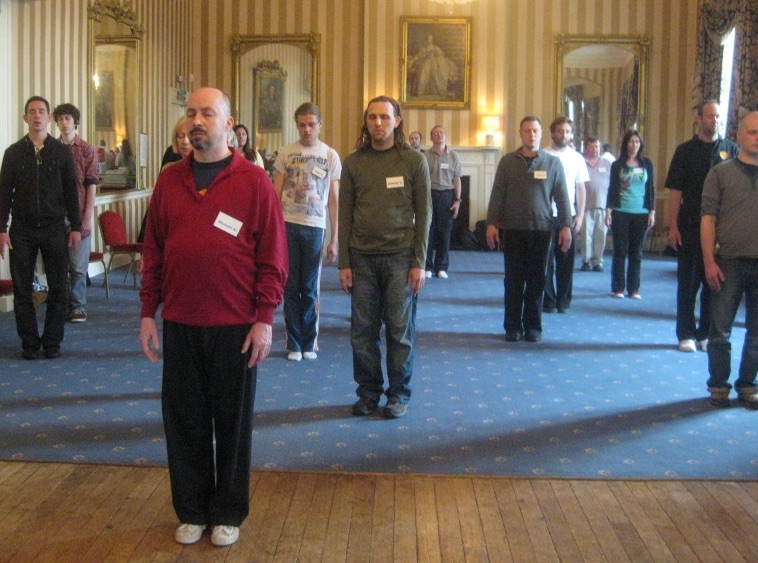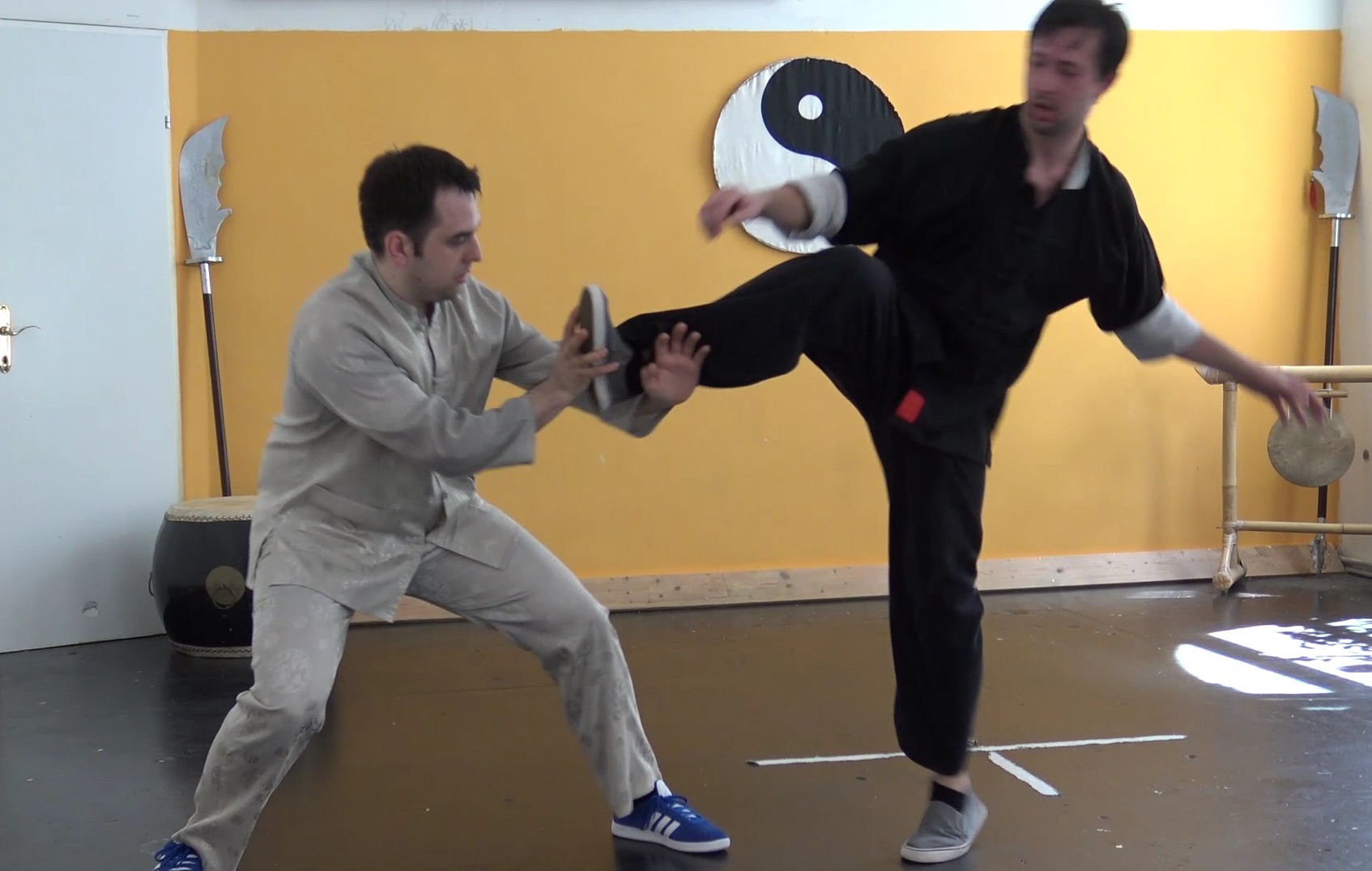STANDING MEDITATION, SITTING MEDITATION, METHODOLOGY AND BENEFITS

Wuji Stance
Question
Could Sigung tell us about different levels that can be achieved in Standing Meditation and compare it with the levels possible to achieve in Sitting Meditation?
I have heard from some of my Sipaks that in the past during the courses great attention have been paid to entering zen/Chi Kung State of Mind. Nowadays entering Zen takes only couple of minutes or we go directly to the exercise, gaining huge benefits anyways. Could Sigung elaborate about the reason of this change, and how does it affect the practice?
There is a saying that every pattern in a Kung Fu set has a combat application. Could Sigung tell us what is the combat application of Wuji stance?
Karol
Answer
If all other things were equal, Standing Meditation produces results faster than Sitting Meditation, but Sitting Meditation is much deeper than Standing Meditation. I must add that Sitting Meditation here is sitting in a lotus or semi-lotus position. It does not apply to sitting upright on a chair.
I remember clearly that once I asked my sifu, Sifu Ho Fatt Nam. “Sifu, can I perform Sitting Meditation sitting on a chair?”
“Yes, you can,” my sifu answered, “but if you want to attain the highest (like merging with the Cosmos), you must perform sitting in a lotus position, or at least a semi-lotus position.”
“But I can’t sit even in a semi-lotus position.”
“That’s easy,” my sifu answered. “Practice your flexibility exercise!”
I was, and still am, an idealist. So I practiced my flexibility exercise, especially stretching my legs, every night for about 2 years. I guess that if anyone can do that, he can do anything.
Eventually I could sit in a semi-lotus position in Sitting Meditation.
For convenience we can classify achievements at three levels – basic, intermediate and supreme. The basic level of achievement of Standing Meditation and Sitting Meditation (in a lotus or semi-lotus position) is being relaxed, and the supreme level is merging with the Cosmos. The intermediate level is anything in between, but we may conveniently classify it as peak performance.
Presuming all other things were equal, here are a very rough comparison between Standing Meditation and Sitting Meditation in these three levels of achievements:
Standing Meditation Sitting Meditation
Relaxation 1 week 3 months
Peak performance 3 month 1 year
Merging with the Cosmos Never 10 years
But other things are not equal. We in Shaolin Wahnam may appear very boastful, and other people may be angry or indignant, but as I have mentioned many times, that is their problem.
We can attain all the achievements of the three levels of attainment in Standing Meditation, and in a ridiculous short time! In my “Merging with the Cosmos” courses, more than 60% of course participants merged with the Cosmos in less than 4 hours! If a monk cultivating in a monastery, be it Christian, Buddhist, Taoist or of any religion, can merge with the Cosmos in 10 years, he would kiss the feet of his master in gratitude.
I need to emphasize that merging with the Cosmos must be performed in the presence of a master, who can bring the participants back to the phenomenal world.
I am not particularly concerned of the change from paying great attention in my earlier years to going directly to entering Zen or a chi kung state of mind now. The important point is that we achieve the objectives of the course, which you described as gaining huge benefits anyways. I would attribute the change to tremendous improvement in my teaching methodology.
When I started teaching chi kung overseas in my earlier years about 20 years ago, I spend about half an hour entering into a chi kung state of mind. I made sure that participants were relaxed and free of all thoughts. Now I spend less than 5 minutes to enter into a chi kung state of mind. Indeed participants can be relaxed and free of all thoughts in just a minute.
A course about 20 years ago would take about 8 hours. A course now would take only 3 to 4 hours. We have more benefits now than before.
Indeed we have progressed so much now that I spend much time to tell participants not to over-train. Over-training is an important issue in our school because I have shortened a years’ teaching, if participants are lucky enough to learn the teaching in a year, to 3 hours!
How does this change from taking a long time to enter into a chi kung state of mind in my earlier years to taking just a few minutes now, affect our practice?
- It shortens the learning process from many years if the participants are lucky to learn the material, to just about 3 hours if they attend my courses.
- Participants have the objectives or results during the course, instead of waiting for many years if they are successful in what they have been practicing.
- It is very important to guard against over-training.
The benefit goes beyond combat. In his daily life, no matter what he does, he would have better results!
It is worthwhile to mention that in a Wuji stance, a participant must be upright and be relaxed. If he is not upright or relaxed, he is not in a Wuji stance.

When we have mental clarity which can be attained by practicing the Wuji Stance, we can have better result in both attack and defence
The questions and answers are reproduced from the thread Questions to Grandmaster on Standing Meditation in the Shaolin Wahnam Discussion Forum.
LINKS
